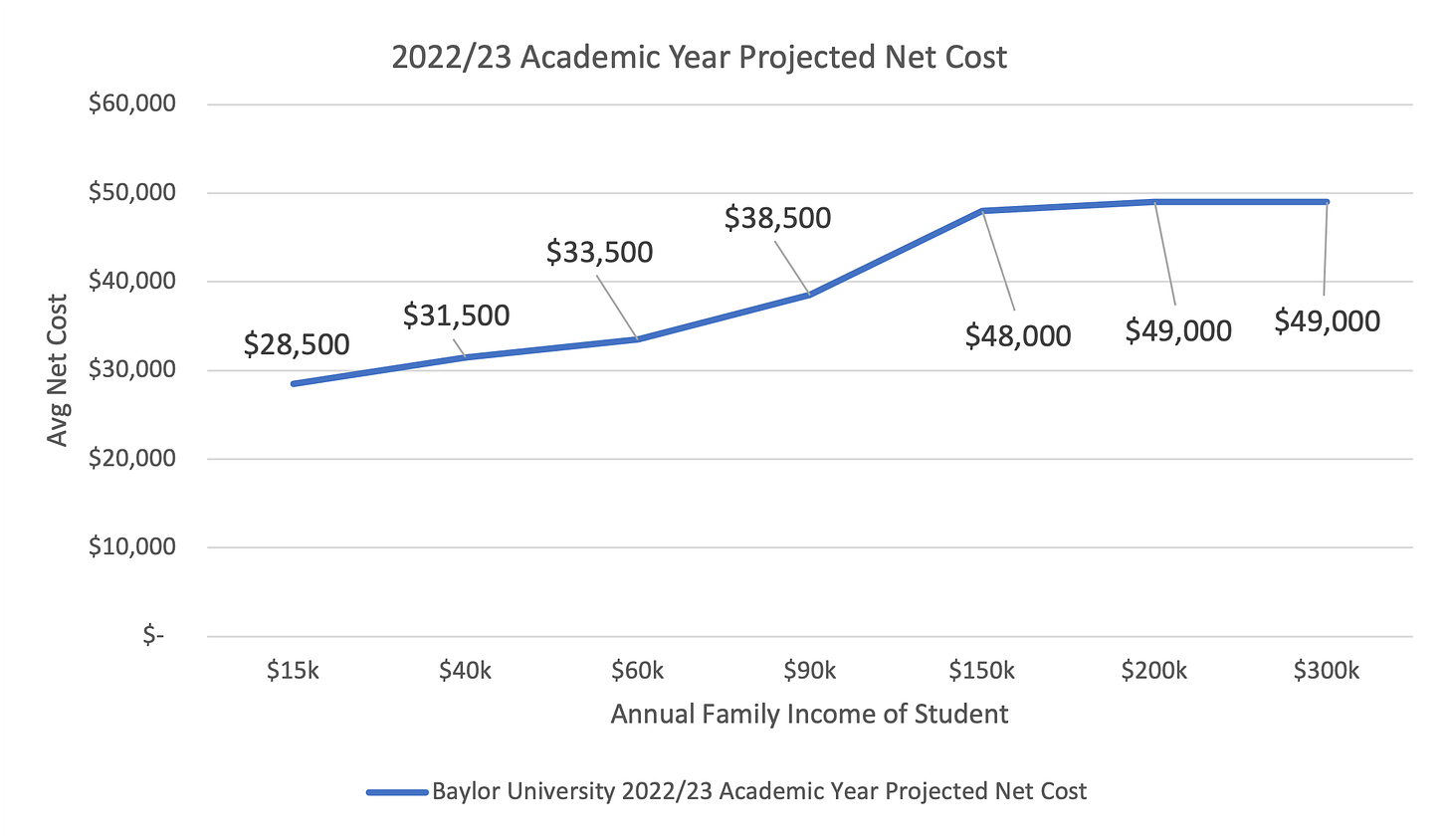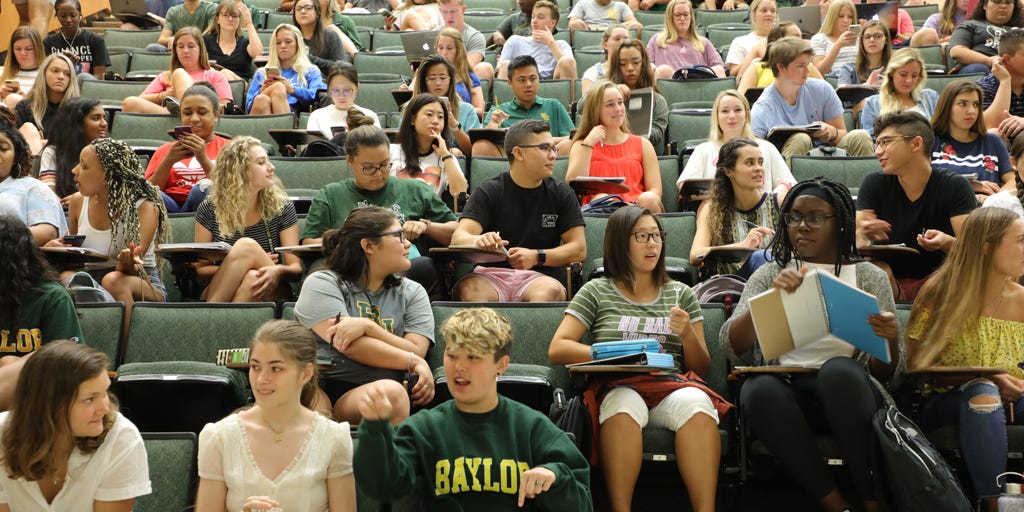2022 Pricing: Baylor University
CTAS cost forecasts for Baylor's 22/23 academic year and full 4-year program
CTAS is sharing its projections of 2022/23 academic year costs for individual colleges as a recurring feature. Similar information covering over 3,000 2- and 4-year schools is available at the CTAS site.
This post projects average net costs for Baylor University in Waco, Texas.
The largest private university in Texas, Baylor ladels on the financial aid, with 93% of students receiving a discount, often a significant one. Despite how Baylor is quite transparent about its openness to discounting, it is striking that 7% of the student body nevertheless pays full stated cost. (International students comprise 3% of Baylor’s entering class in 2019. so there are a number of US students in that full-pay category.)
Prior to COVID, Baylor was caught in something of a holding pattern, enrolling 3,300-3,500 full-time students in its entering class and admitting 40-45% of applicants. In 2021, the school made a concerted effort to gain size, enrolling 4,271 and raising its overall undergraduate body to 15,191, including a larger share of out-of-state students. Baylor has been working to expand its recruiting footprint and close to 40% of its incoming classes now come from outside Texas, higher than it was just a few years ago. While the Baylor administration has stated it is content with this current student body size, this push for size has come at a cost. Baylor has traditionally seen retention rates in the 95% range (retention = % of first-years returning for a second), but this had been declining and fell to 88% in 2021. That 88% isn't bad for a school with Baylor's profile but it isn’t excellent like the rates shown a few years ago.
These projections represent informational projections that will change over time and are not a commitment either by CTAS or the applicable colleges. Figures are rounded to the $500 avoid false specificity. Final net cost numbers will differ from these estimates for many reasons: changes to economic trends, decisions by the colleges both about their own policy and enrollment, as well as decisions about individual students. Estimates of full program costs assume graduation in 4-years (for Bachelor’s) or 2-years (Associate) without any gaps, delays or added semesters/quarters. We take pride in our numbers so, if you believe any should be corrected, please reach out to us at support@collegetuitionadvisoryservices.com and we will work with you to resolve the issue.
Average Net Cost is a consumer-centric metric which shows costs as they are presented in commercial transactions outside of higher education. It represents a full-time student’s cost of attending college including: tuition, room & board, fees and estimates of supplies less institutional aid of all kinds (including need-based and merit), and less federal and state/local aid. Loans and other repayable amounts, along with work study earnings, are excluded and do not reduce the cost. Room and board charges are on-campus costs for residential colleges; for students attending non-residential institutions, the college's own estimate of such off-campus costs is mostly used. CTAS' Net Cost differs from the Net Price figure self-reported by colleges because it is comprehensive and covers all entering students, including the approximately 40% not included in Net Price calculations.
Please find more information at the CTAS site. CTAS provides data, reports and personalized assistance with college pricing and aid appeals.



